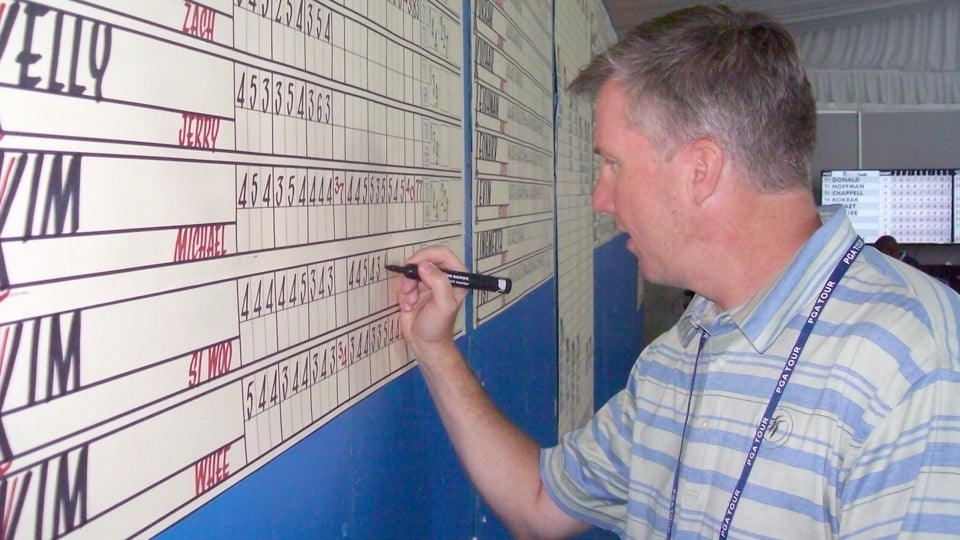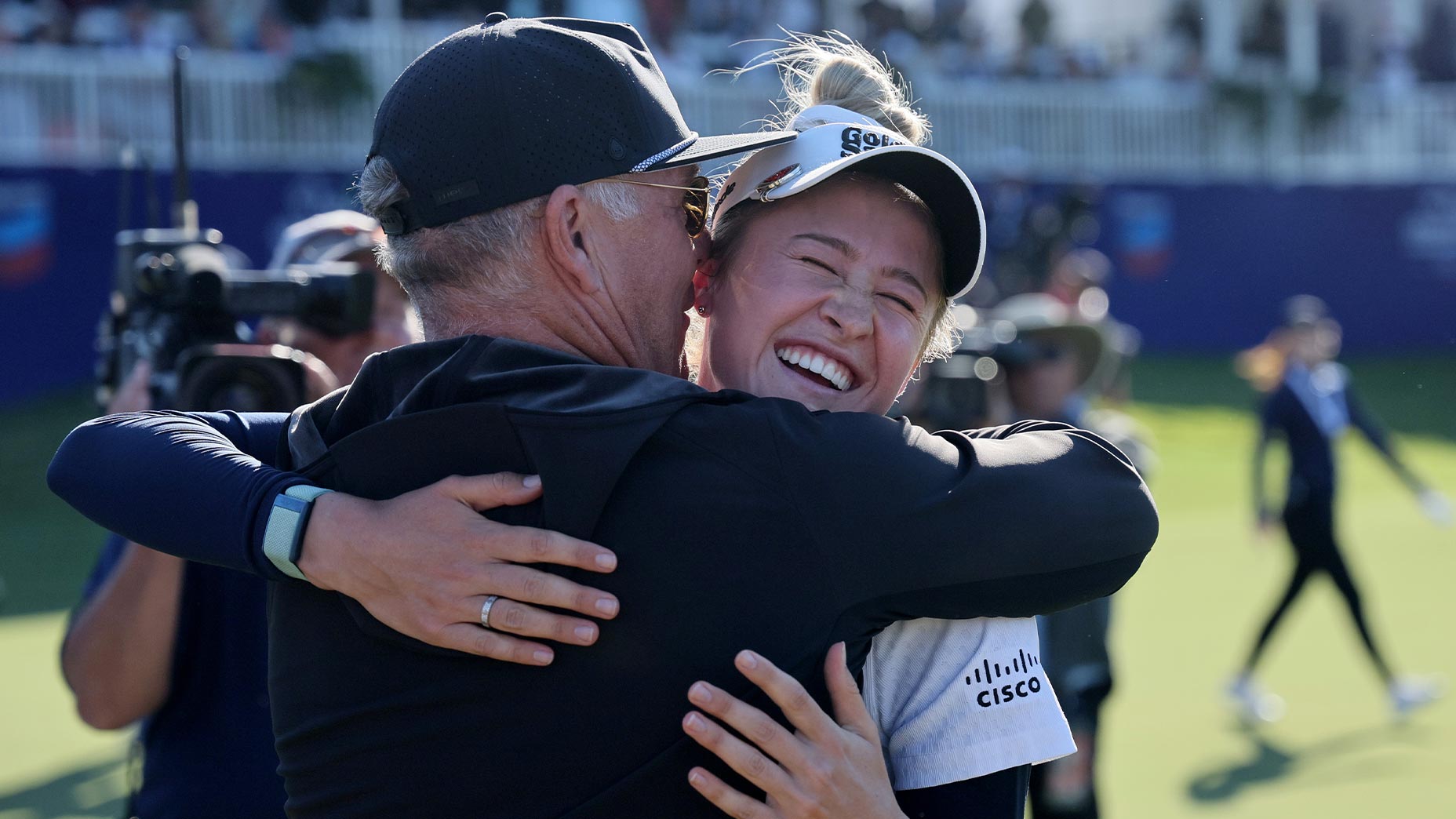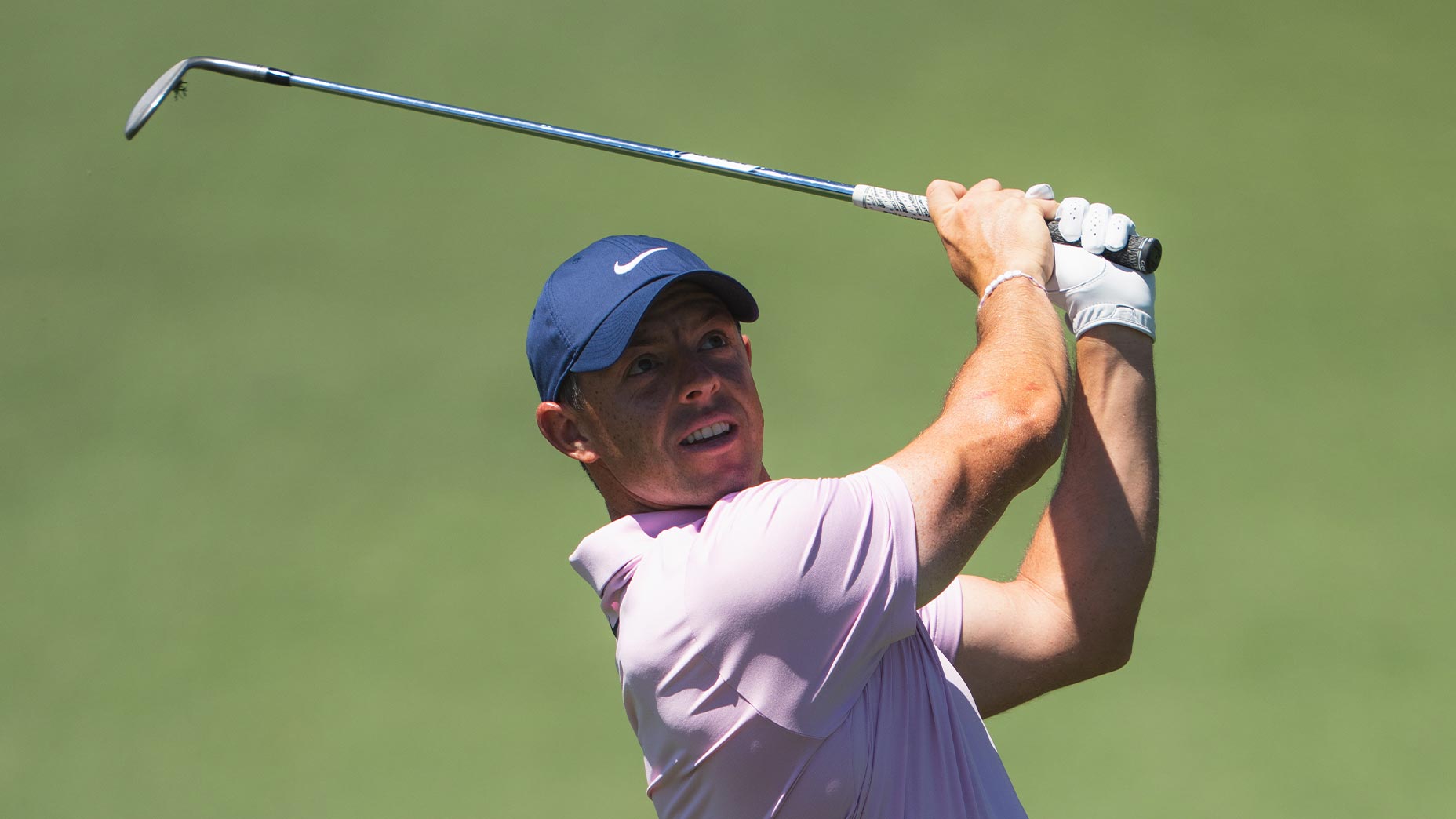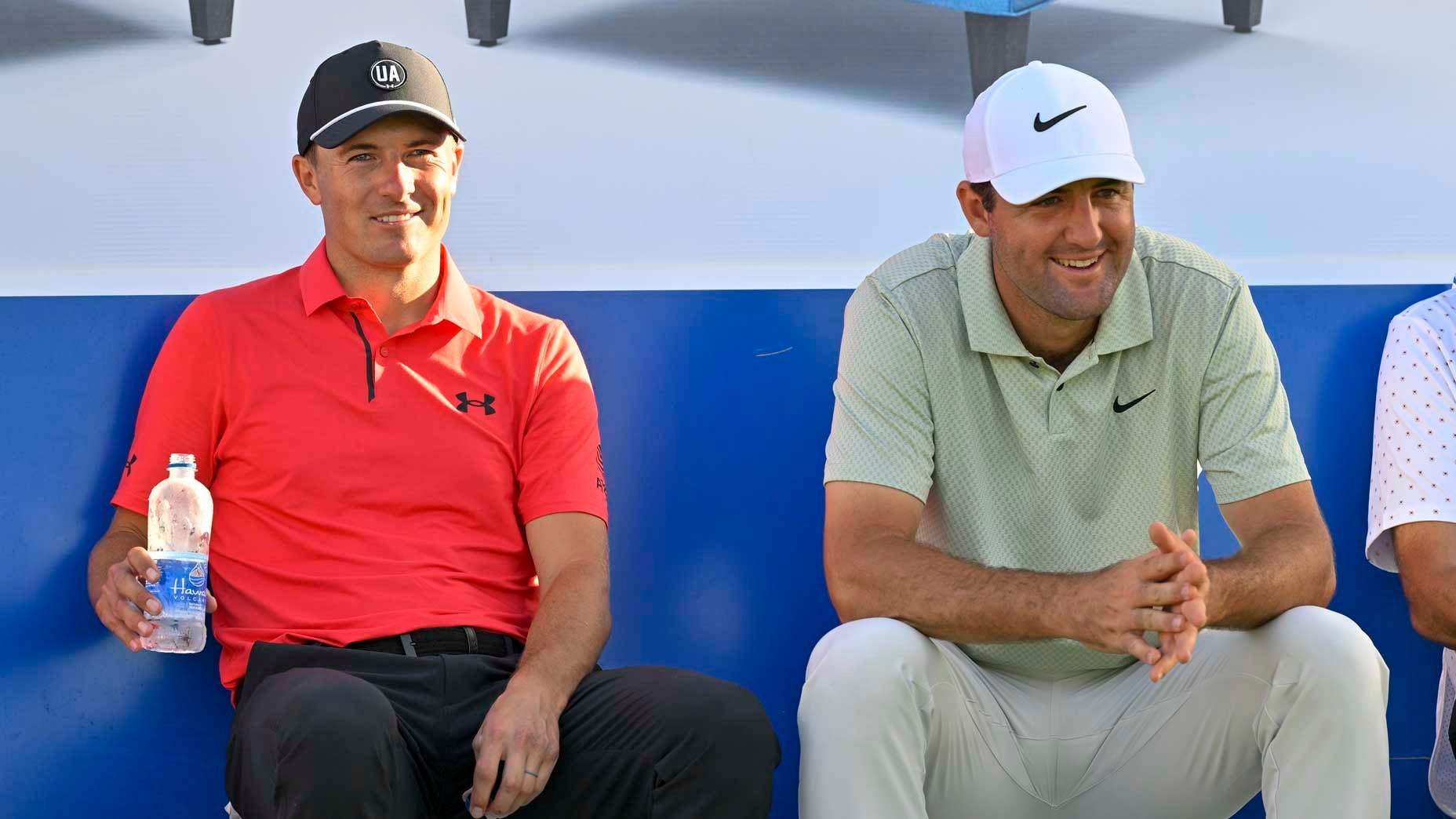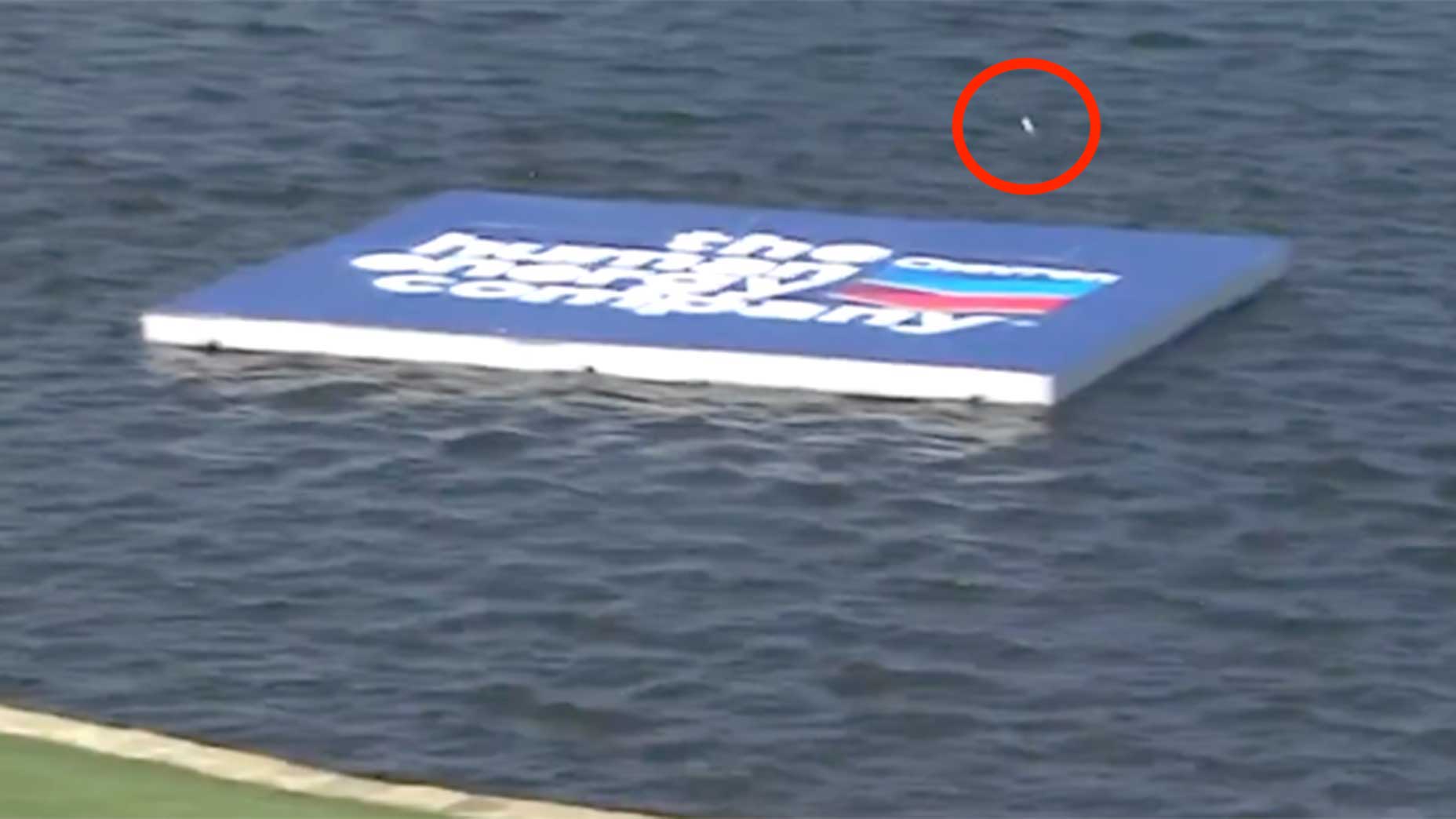HILTON HEAD ISLAND, S.C. — Golf calligraphy isn’t dead but it’s definitely in critical condition.
Casey Jones is the Last of the Mohicans in this field. He’s not actually a Mohican, of course. He’s also not a railroad engineer, despite what you might glean from his name. He is a calligrapher, a guy who writes in the names of all the golfers in the RBC Heritage field and their daily hole-by-hole scores, plus a daily summary sheet leaderboard. He draws this information on big paper sheets stapled to a wall in the pressroom.
And Casey is the Last of the Golf Calligraphers. At least, on the PGA Tour. It’s a dying art because, well, it has become redundant.
This week at Harbour Town Golf Links could be the last calligraphy leaderboard ever drawn on the PGA Tour. These boards have been a staple at tour stops probably back to the 1950s but now they’re dinosaur-in-the-tar-pit, afternoon-newspaper, rotary-dial phones stuff.
“This is the only place I still do a calligraphy board,” said Jones, who used to travel the tour full-time and now lives in Atlanta with his wife and two children. “I think it’s the only media center with a hand-drawn board. There may be two or three outdoor boards somewhere still. Most tournaments have abandoned the whole concept. These boards used to be the only way to see what every player did on every hole. Phones and computer technology have just made these obsolete.”
So why is the Last of the Golf Calligraphers making his last stand at the RBC Heritage?
“Because I’ve had such a long-standing relationship with this tournament, I think they just humor me,” Jones says with a laugh. “Every year, I ask them if they want me to come back and they say, Oh, absolutely! I’m like, OK, even though I know I’m just writing stuff up that people can get faster on the computer. My family comes down, they have a fun time at the beach. It’s a great week for us.”

Jones has a small printer—it almost looks like an old adding machine, in fact. It spits out hole-by-hole scores for players who are making the turn. He tears off the latest receipt, grabs a pen and heads over to the wall to start marking numbers. Beautifully crafted, oh-so-legible, exactly-the-same-every-time numbers. Completely unlike the scribbling someone like me would do. I had years of C-minus report card grades for penmanship (and someday, I’ll make them pay).
Casey uses black ink for the hole-by-hole scores and the day’s 18-hole score. He uses black for each player’s 54-hole total at the end of the linescore. Today, he’s using blue ink for the 72-hole scores of the early finishers and the nine-hole scores for the front and back nines. Saturday, he used red-ink for the nine-hole scores.
There is a definite skill to all this. Jones makes it easy because, as Tiger Woods might say, he’s had so many reps.
MORE: Why the RBC Heritage Might Be the Most Fun Stop on Tour
The reps are few and far between now. Saturday afternoon, I watched Jones put up the back-nine scores (black ink, of course) for Hiroshi Iwata, the Japanese golfer who shot 63 at last year’s PGA Championship at Whistling Straits. Something caught my attention besides Iwata’s front-nine 40. Hey, there’s a 6. Whoa, there’s a 7. Uh-oh, there’s a couple of 5s. Oh, man, that’s not good. Jones switched pens and wrote Iwata’s nine-hole score in red ink—43. Yeow, the former Mr. 63 turned into Mr. 83 today. Well, it happens in the wind. These guys are human.
Even Jones makes the occasional mistake, which is easily fixed by gluing over the offending number with a perfectly sized square of paper and the correction.
There was one this week. Just one. When he prepped the weekend boards for the players who made the cut (he has to do a whole new set, rearrange them and staple them to the wall). Somehow, he said, he inverted the first two rounds of Ernie Els. Instead of listing them 72-71, he had them at 71-72. He fixed it, of course, with a little glue.
He doesn’t use a calculator. He doesn’t need it. Casey has done nine-hole scores for so long, he can practically feel the sum when he finishes the line. He simply uses nine 4s as his basis and keeps track of how many strokes over or under 4s each card is. Pretty simple once you start using it, but hard to explain to newbies who marvel at his sensational math skills. It’s the reps.
Sudden question: What’s the best number you’ve ever drawn?
Startled, Casey gives me a funny look. “The best number? Uh…” he says.
Nevermind. Not everyone can handle genius questions.
Meanwhile, Casey has been glancing at the PGA Tour-issued laptop in the pressroom’s front row where we’re conversing.
“Oh dear,” he says dramatically. “Hold on a second. What happened?”
He’s pushing buttons on the laptop, scrolling down and looking intently at the screen.
“Carl Pettersson just threw us a curveball!” he continues. “He just let in all the guys at 7-over. The cut was going to be at 6 with 70 guys but Carl’s in free-fall and now all the 7’s are in!”
This is inside PGA Tour scoring stuff. Because an excessive number of players made the cut after 36 holes—82 players under the 70 and ties rule—a secondary cut is made after Saturday’s third round with the field cut to the closest number to 70 players. The number was exactly 70 at 6 over but Pettersson shot 47 on the back nine (four 5’s, two 6’s and a 7 according to Casey’s figures) for 84 and plummeted to 11 over after a double-double finish. Pettersson’s plop meant the cutline went to 7 over, letting 76 players in for Sunday’s final round. Pettersson was not among them.
“That’s another six scores I’ve got to fill in and tee times that start 30 minutes earlier,” Casey says, pretending the change is quite the ordeal.
When your job is all about the numbers, inside-golf moments like these are actually fun to share.
Sudden question: What color pen do you use for irony?
Casey just looks at me quizzically. “You’re killing me,” he says.
Fine. Here’s your calligrapher irony: Casey gets his golf gloves from Pettersson. They’ve been friendly for years.

“Carl wears his glove for one round and then throws it in the garbage,” Casey says. “I told him, If you’re going to do that, why don’t you throw it in my hand? I’ll use it. So I’ve got about 20 Carl Pettersson gloves at home. And yes, I use ‘em for my 12 rounds of golf a year.”
Keep that irony-colored pen in hand, pal. The RBC Heritage, under a different title sponsor in 1997, was Casey’s first golf event as a calligrapher. So this is his 20th year and if this happens to be the Last Ever Calligraphy Stop in PGA Tour History, well, Casey Jones came full circle.
Sometimes, he does the outdoor spectator boards and sometimes he simply works in the scoring area. He’ll do 10 events this year, mostly in scoring. Over the years, he has done calligraphy at some LPGA and PGA Tour Champions events, too, but Harbour Town is where it all started, a graphic artist fresh out of the University of Florida where his placekicking career never got off the tee.
“I was a walk-on placekicker and was on the football team for two years,” Casey says. “I never got in a game. Then Steve Spurrier showed up as head coach and cut me, as well as a bunch of other guys. He never saw me kick a single kick, but all of us were gone. He called it ‘trimming the fat.’ l was kind of bitter about that because I was having a lot of fun.”
Back to calligraphy. Casey started doing calligraphy boards at golf tournaments and at the peak, he figures he was on the road for 35 events a year.
Sudden question: What’s the best place you’ve ever done a calligraphy board?
Casey considers it. “Well, I did the outdoor board at the Mercedes Championships in Kapalua once, and I could look out from under a tree at the ocean. That was pretty good. I did the outdoor board at Spyglass during the AT&T and if you take a few steps through the woods there, you come out by the seventh green and eighth tee at Cypress Point. I watched some golfers who weren’t in the tournament hit shots there. That was pretty cool.”
MORE: Social Media Snapshots From the Pros
Jones travels a lot less now but he’s got a side business that keeps him busy. While on the road doing scoreboard calligraphy, he figured everyday golfers might enjoy commemorative artwork from a local tournament they played or for a hole-in-one. A lot of pro golfers enjoyed that, too, it turned out. So now he’s got a steady trickle of special-order gigs from golfers all over the world. (www.CaseyJonesGolf.com)
Kevin Kisner’s caddie had Casey produce a framed calligraphy piece that commemorated Kisner’s first PGA Tour victory last fall at Sea Island. The caddie surprised Kisner with it as a gift.
“I asked Kevin this week if he got something,” Jones says, “and he said, Oh, yeah, it was great, thanks.”
Tour winners often used to ask for the press-room or outdoor summary boards he drew, too. Jones was a good friend of Chris Smith’s when Smith won the Buck Classic at Westchester. Smith wanted the actual board that Jones used at the tournament, so Casey gave it to him.
Sudden answer: “I didn’t have anything for the best number I ever wrote but I remember the worst number,” Casey says. “I wrote in the 18 that John Daly made at Bay Hill that year (1998) when he had a Tin Cup hole. I’ll never forget that.” History comes in many forms.
Lately, Jones been doing items with historical ties. “I recreate things and make them a lot jazzier—maybe I draw the tournament logo or the course logo on it with dates,” Jones says. “A lot of players order those and get them framed. Once they’re framed, they look sharp. They’re different from a trophy because it’s got the player’s hole-by-hole score from every round. It tells the story of the week.”
He recently worked on some calligraphy for Scioto Country Club, the Ohio course where a young Jack Nicklaus grew up.
“Scioto wanted me to recreate some scorecards from when Bobby Jones won the 1926 U.S. Open there,” he says. “I did it in an old-time font, it was a lot of fun.”
Scioto also commissioned him to do boards for the matches from the 1931 Ryder Cup at Scioto, which the U.S. won in a romp, 9-3.
“The historical pieces are my favorites,” Jones says.
If you need an excuse to check them out, you can spectate at the U.S. Senior Open this August at Scioto.
Sudden question: What’s next for the Last of the Golf Calligraphers?
“My next tournament will be the Wells Fargo Championship in Charlotte in a couple weeks,” he says. “I’ll be working in the scoring area, I won’t be doing calligraphy.”
So you’ll be using your wizard-like nine-hole math skills that have been honed by years of staring at scorecards and adding numbers?
He nods in agreement. I get it. Hey, it’s not like he has to draw me a picture or anything.


